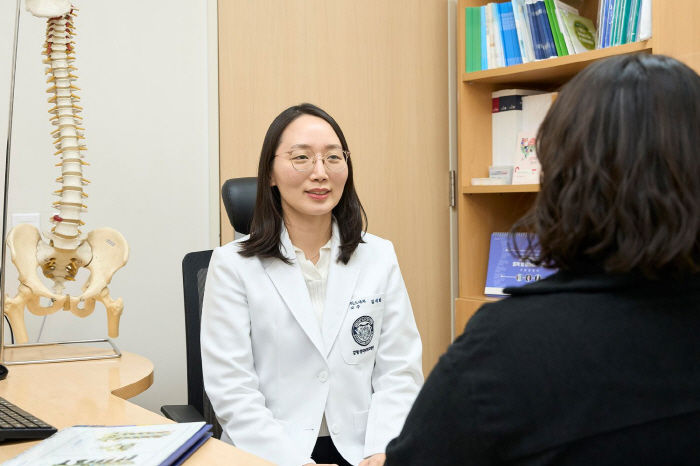Suspecting Sjogren syndrome if your eyes and mouth are dry and tired...more than half of the patients are middle-aged women
Apr 12, 2025
|
Professor Kim Se-hee explained that "the reason why Sjogren syndrome is common in middle-aged women is that it is highly associated with sex hormones" and that "the incidence of Sjogren syndrome increases during premenopausal periods when estrogen and progesterone decrease in general." In fact, various studies have confirmed that the more exposure to reproductive hormones, the more Sjogren syndrome is prevented. It is also related to the fact that Sjogren syndrome increases when aromatase inhibitors that inhibit estrogen production are used in breast cancer patients.
◇ Various factors such as environment, genetics, immunity, etc…Typical symptoms are dry mouth and eyes
Sjogren syndrome, like other autoimmune diseases, has no clearly identified cause. It can be explained by environmental factors, genetic factors, and complex development scenarios of innate and acquired immunity. More than one cause, various factors affect each other and disease occurs.
As environmental factors, a variety of infectious agents, especially viruses, are considered to be the triggers of potential Sjogren syndrome. Viral infection activates the innate immune response and increases interferon. Genetic associations have also been confirmed, and it is known that relatives have other connective tissue diseases in one-third of patients with Sjogren's syndrome. As immunological factors, natural killer cells and B cells have been demonstrated to increase major cytokines.
Sjogren syndrome has a wide variety of symptoms throughout the body. Typical symptoms are dry mouth and dry eyes. The symptoms of dry mouth become difficult to swallow dry food and difficult to speak for a long time due to decreased saliva secretion. The taste buds change and appear as if the mouth is burning. A physical examination confirms dry and red oral mucosa, cavities, and periodontal diseases in the mouth, and 60% of patients are accompanied by hypertrophy of the parotid gland or parotid gland.
As the tear glands become dry, the eyes may become stiff and foreign. Keratoconjunctivitis occurs and photosensitivity, erythema, and itching appear. Symptoms can worsen in activities with less blinking, such as long-term reading, driving, and using computers, and in wind, dusty, smokey environments. In addition, Sjogren's syndrome affects the upper airways, and the thick mucus of the vocal cords can cause a sore voice and cough, and pain can occur due to dry skin and vaginal dryness. Pancreatic dysfunction and hypothyroidism may be caused by decreased secretion function of the digestive system.
◇ Complications such as chronic pain, fatigue, arthritis, erythema, etc
Sjogren syndrome is also famous for accompanying various complications. Chronic extensive pain is common in patients with Sjogren syndrome, and 70-80% of patients complain of fatigue. Arthritis, ring-shaped erythema, vasculitis, interstitial pneumonia, and neuropathy may be accompanied. In particular, patients with Sjogren syndrome are known to have an increased risk of developing lymphoma. In addition, in the case of Sjogren syndrome mothers with some anti-Ro or anti-La antibodies, it can be transmitted to the fetus through the placenta and cause neonatal lupus syndrome, so it should be confirmed by fetal echocardiography.
The diagnosis of Sjogren's syndrome itself is difficult. For diagnosis, at least 3 months of dry mouth or dry eyes should be present. Additionally, a lip salivary gland biopsy (3 points), an anti-Ro/SSA or anti-La/SSB antibody test (3 points), an eye staining test (1 point) confirming tear gland function, or a shimmer test (1 point) and a saliva flow rate confirming salivary gland function are measured (1 point), and a total of 4 points or more is diagnosed as Sjogren syndrome. Not all tests are performed, and if the shimmer test and saliva flow rate test show insufficient results, eye staining or lip salivary gland biopsy may be performed. In addition, a salivary gland scan can be performed to help with diagnosis. There is also a possibility that ultrasound of the salivary glands will be applied to the classification criteria in the future instead of the recent salivary gland biopsy.
◇ Uncompleted disease, steady drug treatment and management are important
Sjogren syndrome is a chronic disease, and there is currently no cure, and treatment to relieve and control dry symptoms is mainly performed. Drying the mouth should first avoid caffeine, smoking, and alcohol, and treat sinusitis breathing through the mouth. Drink water frequently, consume unsweetened candy or gum, and use toothpaste containing fluoride and oral sprays. For drug treatment, choline parasympathetic ganglion promoters such as pilocalfin can be used.
For dry eye symptoms, you can try wearing protective glasses or goggles in dry and windy environments, and you should limit activities with less blinking for a long time. Drug treatment for dry eye is based on artificial tears and lubricating ointment, and topical steroids and topical cyclosporine may be used when inflammation is accompanied. Patients who do not respond to medication may be assisted in procedures such as tearpoint obstruction.
|
This article was translated by Naver AI translator.















